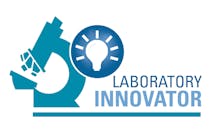Digital imaging may bring new blood to Microbiology
Enrollment in an already dwindling number of medical technologist programs has seen a steady and dramatic decrease, with both programs and enrollees down more than 60 percent since the mid-1980s. Microbiology has felt the strain of a decreased workforce, and innovative companies have been quick to respond with automated upfront specimen processors and full lab automation, including digital imaging. With the current Baby Boomer workforce about to retire and very few new replacements on the way, Microbiology has reached a tipping point in the need to automate.
But the new-era technology developed in response to the shortage may have an unexpected result: bringing a new generation back to Microbiology. Young, technology-driven laboratorians may not love the idea of looking at plate after plate of no growths, but they might be much more excited about looking at plate images on high-resolution monitors, zooming in to more carefully scrutinize colonies, sharing plate and Gram slide images directly with point-of-care providers, and collaborating on healthcare decisions. Microbiology will always need trained professionals to read and report. Digital imaging might be the catalyst to attracting new, talented professionals back to the lab.
Amanda Schmidt, Marketing Manager, COPAN Diagnostics, Inc., Maker of WASP and WASPLab
Putting the pathologist in the driver’s seat
As accountable care and reimbursement cuts create pressure on Anatomical Pathology labs to improve patient outcomes while minimizing costs, digital pathology has emerged as a premier example of a technology-driven solution that advances both goals.
Over the past decade, the introduction of comprehensive solutions for image acquisition, management, analysis, and reporting has begun to transform the AP lab. Digital pathology gives pathologists anywhere, anytime access to whole slide images, and image analysis algorithms enable them to make consistent and objective case interpretations. Digital pathology technology is also widely used to facilitate remote physician consults, second opinions, and pathology education.
As the field continues to evolve and the technology becomes more widely adopted, it creates the potential for one clinician— the pathologist—to integrate all aspects of a patient’s case into a single diagnostics dashboard that incorporates all relevant diagnostic data from a variety of information systems, such as radiology scans and clinical history. Gaining access to this holistic view of patient information may enable the pathologist to deliver a comprehensive diagnosis to oncologists and other stakeholders.
While this concept represents a future state, the digital workstation of today’s pathologist already delivers enhanced accuracy and a more streamlined and efficient lab workflow, contributing to improved patient outcomes.
Kevin Kraus, Vice-President of Marketing, Tissue Diagnostics Roche Diagnostics, Makers of VENTANA digital pathology and workflow solutions
Relaxed regulatory oversight may be key to future growth
The Digital Imaging market could easily be segmented into submarkets to include whole slide scanners, software for image analysis, and hardware for transmitting and storing the images. Taken in total, the market is expected to grow at about 25 percent year over year for the next five years. In order to sustain this growth long term, I believe the FDA will need to approve the use of this technology for primary patient diagnosis in the United States, and with this approval, the labs need to be fairly and adequately compensated for their services that employ this form of technology. In addition, continued technological advances relative to workflow enhancements, reduction of scanning times, along with a more cost-effective infrastructure for transmission and storage of images, will also be required. Until these challenges are met, I believe that pharmaceutical companies, teaching institutions, and labs servicing less restrictive countries relative to the use of this technology for primary patient diagnosis, will be the focus of vendors serving this marketplace.
Greg Scott, Clinical Staff Scientist, Beckman Coulter Diagnostics, Maker of the Iris iQ200 Urine Microscopic Analyzer and iRICELL system
Digital imaging will continue to transform lab processes
Today’s clinical and hospital laboratories continue to seek technological platforms that can elevate laboratory efficiencies by reducing cost, improving quality, and increasing productivity. One such advent is digital imaging that combines the unlimited scope of computers with digital photography to better assess cellular morphology and quantify cellular and particle composition. The development of flow-based analyzers propelled digital flow imaging to state-of-the-art status for microscopic analysis of urine and body fluids, and in the not-too-distant future the same technology will be applied to whole blood. The continuous expansion of computing capacity has developed analyzers that can auto-sort particles based on size, shape, contrast, and texture that when combined are used to identify pathological markers in urine and body fluids.
The opportunities that digital imaging offers future diagnostics are quite intriguing. Technological advances in cameras and computers allow for enhanced and better-defined images that in turn expand algorithms that drastically improve the sensitivity and specificity of neural networks. Digital imaging is having an impact today and will continue to transform laboratory processes as manual microscopic procedures once singularly operated and viewed at a laboratory station are being replaced with automated analyzers that allow remote viewing by multiple users. Patient care will be further enhanced as laboratory reports and images will be more readily available through mobile devices, thereby increasing laboratory productivity and improving communication of critical information to clinicians.
Rick Callahan, VP Sales and Marketing, Novopath, Inc., Maker of the NovoPath Anatomic Pathology LIS Software System
Visual search will help digital pathology realize its full potential
Since the early 1990s, when whole slide scanners first began to appear, digital pathology has made progress in clinical and educational settings. Virtual slides are now informing medical research, drug development, remote consultations, primary diagnosis, decision support, proficiency testing, and much more. But the innovation still hasn’t been able to realize its full potential. Only recently have we begun to explore digital pathology as a truly “disruptive” innovation for laboratory medicine—one that can improve operational efficiency and reduce costs in the long-term.
Emerging image analysis technology—namely visual search technology—is poised to deliver on the full definition of disruptive innovation. Visual search will support researchers and subspecialists in their efforts to build and manage histological slide repositories. Visual search will then grow physicians’ capacity to interpret and classify complex cases, using content-based image retrieval.
It’s all happening thanks to improved algorithms for faster vector quantization—a technique used to code and compress audio and visual data. Digitized WSI datasets can now be queried and searched to find matching predicates, without text-based search terms, metadata, or slide descriptors. Focusing on information that’s inherent to the specimen, pattern recognition algorithms can identify similarities and isolate subtle differences among related samples.
Visual search can also help pathologists and cytologists put their finger on a medical term or differential diagnosis, using a reverse metadata lookup. By entering a virtual slide, and scanning the cohort of resulting images, clinicians can access a whole world of prior diagnoses.
Ole Eichhorn, Founder and CEO, eyesFinder









